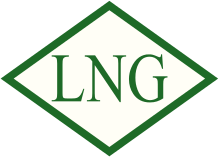
China transport activity picks up as coronavirus slows

Less than 30pc of China's road transportation firms – comprising commercial passenger and cargo companies — have resumed operations following the lunar new year, while vehicle flow rates on highways across the country are only around half of normal levels, the transport ministry (MoT) said on 22 February.
Operations are expected to increase in the coming days. There were around 15.2mn vehicles on China's highways on 21 February, 47.5pc fewer than a year earlier, the MoT said. But vehicle numbers had risen by 10pc each day since 18 February. Loading volumes on trains have increased since 10 February and ship turnover has reached 95pc of levels seen before the lunar new year holiday, according to figures released today.
Around 28pc of road transport and 41pc of waterway companies had resumed operations by 22 February, according to a MoT survey of 11,854 companies. Around 65pc of port operators were back on line.
Over 95pc of coastal ports are operational, the China ports and harbors association (CPHA) said.
The amount of crude unloaded at China's seven major ports, including Qingdao, Rizhao, Ningbo-Zhoushan and Tianjin, fell by 9pc from the year-earlier period to 7.05mn t (around 7mn b/d) in the week ended 15 February. Crude inventories at Ningbo-Zhoushan and Rizhao ports were more than 25pc higher than a year earlier, the CPHA said.
Authorities in the oil-refining hub of Shandong have removed road blocks and relaxed requirements for vehicles entering or leaving the province from having to register. This is helping ease transportation of oil and other products. Emergency measures were also eased in other provinces including Guangdong, Liaoning, Shanxi and Yunnan. Tight restrictions in Hubei province, the epicentre of the outbreak, remain in place until at least 11 March.
More migrant workers are returning to employment after the extended lunar new year holidays, boosting economic activity. Over 80mn migrant workers have returned, with 120mn more expected by the end of February and another 100mn due to return from March onwards, the MoT said on 15 February.
Work on around 15pc of key road and waterway projects in 21 provinces and cities had resumed by 17 February. This is expected to pick up sharply at the end of February and in March.
Oil stocks high
A rise in transport activity would boost oil and gas demand and could help reduce inventory pressure. Oil product inventories across China were over 21.1mn t on 21 February, top economic planning body the NDRC said. LNG stocks at main suppliers are also high, as average daily gas consumption is down by 25pc since 24 January compared with the period before the lunar new year, it said.
The NDRC moved to support the economy yesterday by cutting commercial electricity prices by 5pc from 1 February to 30 June and implementing measures to reduce gas prices for non-residential users. It has cut retail price caps for gasoline and diesel twice this month, by a total of Yn835/t and Yn805/t respectively.
China's economy is likely to stage a quick recovery from the coronavirus, supported by restarts at factories and inventory replenishment, central bank the PBOC said. "The most likely scenario is a V-shaped curve, which means a decline in economic activities followed by a rapid recovery, with the total economic impact relatively contained," it said.
There were 409 new coronavirus cases in China yesterday, down from 648 a day earlier, according to government figures. The country now has 77,150 confirmed cases, 83pc of which occurred in Hubei.
By Lucy Huang


Trump weighs using $2 billion in CHIPS Act funding for critical minerals

Codelco cuts 2025 copper forecast after El Teniente mine collapse

Electra converts debt, launches $30M raise to jumpstart stalled cobalt refinery

Barrick’s Reko Diq in line for $410M ADB backing

Abcourt readies Sleeping Giant mill to pour first gold since 2014

Nevada army depot to serve as base for first US strategic minerals stockpile

SQM boosts lithium supply plans as prices flick higher

Viridis unveils 200Mt initial reserve for Brazil rare earth project

Tailings could meet much of US critical mineral demand – study

Kyrgyzstan kicks off underground gold mining at Kumtor

Kyrgyzstan kicks off underground gold mining at Kumtor

KoBold Metals granted lithium exploration rights in Congo

Freeport Indonesia to wrap up Gresik plant repairs by early September

Energy Fuels soars on Vulcan Elements partnership

Northern Dynasty sticks to proposal in battle to lift Pebble mine veto

Giustra-backed mining firm teams up with informal miners in Colombia

Critical Metals signs agreement to supply rare earth to US government-funded facility

China extends rare earth controls to imported material

Galan Lithium proceeds with $13M financing for Argentina project

Kyrgyzstan kicks off underground gold mining at Kumtor

Freeport Indonesia to wrap up Gresik plant repairs by early September

Energy Fuels soars on Vulcan Elements partnership

Northern Dynasty sticks to proposal in battle to lift Pebble mine veto

Giustra-backed mining firm teams up with informal miners in Colombia

Critical Metals signs agreement to supply rare earth to US government-funded facility

China extends rare earth controls to imported material

Galan Lithium proceeds with $13M financing for Argentina project

Silver price touches $39 as market weighs rate cut outlook

















